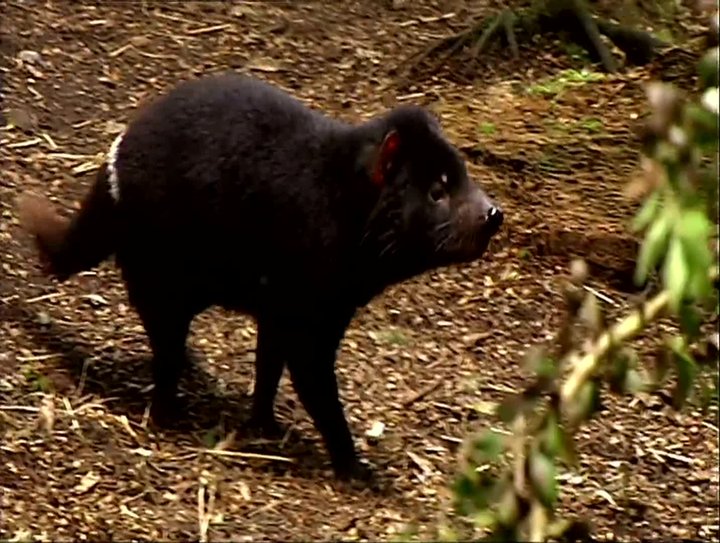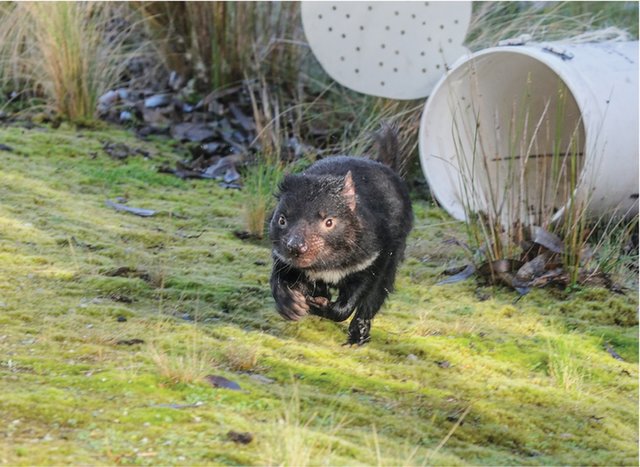IntheWild
Devilsarelargelysolitaryanimals,butthatchangeswhenfoodisinvolved.Devilshaveanexcellentsenseofsmell.Theycandetectcarrionfrom0.8kilometers(abouthalfamile)away.Oncetheysmellit,theycantrackitfast.Devilshavebeen“clocked”at25kilometers(15.5miles)anhourforasfarasonekilometer(0.6 miles).
Thingscangetalittletrickyoncetheyfindwhattheyaresmelling.Devilsquicklyestablishanorderaboutwhoeatswhatandwhen.Tasmaniandevilshave
11distinctvocalizations,whichinclude:“snort,”“humf-growl,”“bark,”“clap”(snappingofthejaws),“growl-whine,”“screech,”“sneeze,”and“shriek.”Eachsoundmeansadifferentthing.A“conversation”overadeadwombatmightstartoutwithsnortsandhumf-growls.But,itcanquicklybecome
full-on shrieking.
Tasmaniandevilsusetheirexcellentsenseofsmelltoavoidpredatorsandlocatepreyand carrion.
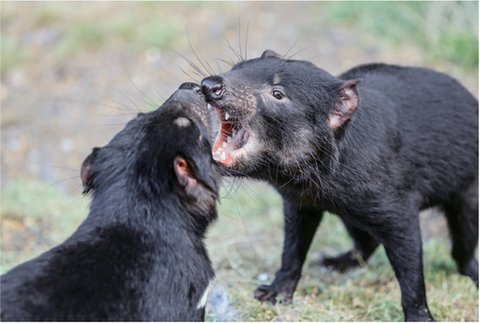
TheseTasmaniandevilshavea“discussion”over dinner.
Atacarcasswhereanumberofdevilsallwanttoeat,thesesoundsestablishanordertothechaos.Devilscombinetheirsoundswithbiting.Theyusetheirpowerfuljawstosnapateachother.AndthisiswheretheTasmaniandevil’stroubleasaspecies began.
TroubleinTasmania
Asfarbackas1996,aphotographertookapictureofsomedevilsonthenortheasternendoftheisland.Theirfacesweredistortedbylargetumors.He’dneverseenanythinglikeit.Hequicklyshareditwithsomescientistsheknew.Theyhadneverseenitbefore, either.
By2002,scientistswereobservingthesetumorsregularly.Theybegantostudythetumorsanddiscovereditwasatypeofcancer.Cancercannottypicallybe“caught.”Thecancercellsfromoneindividualarenotthesameastheyareinadifferentindividual.Yet,scientistslearnedthatwhatwasattackingdevilsisoneofonlyeightknowncancersthatcanspreadfromoneanimaltoanother.Itiscalleddevilfacialtumordisease.Anditisfatal.Ifonedevilhasitandbitesanother,bothdevilswillhavethediseaseandbothwilldie.Becausedevilsoftenbiteeachotheronthefaceduringtheirfightsoverfood,thediseasebegantospread quickly.
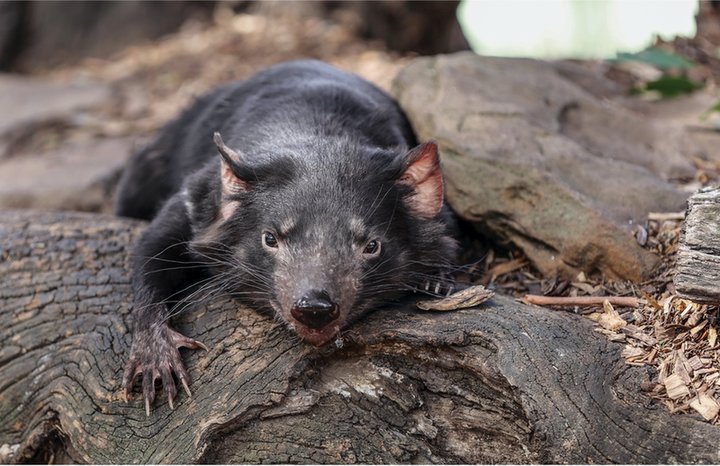
AcancerspreadsbetweenTasmaniandevilswhensickanimalsbitehealthy ones.
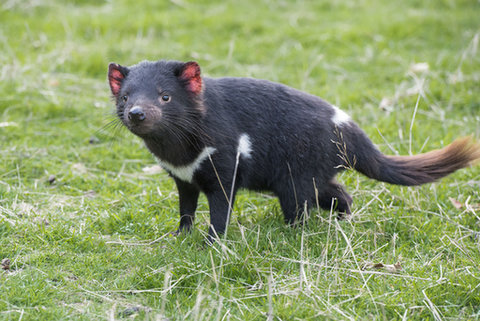
ayoungTasmanian devil
Whatwasgoingon?Aninfecteddevil’sbodydidnotfightthecancercells.Ittookscientistsalongtimetounderstandwhy.Itturnsoutthatthistypeofcancercan“hide”fromadevil’sdefensesystem.Thedevil’sbodythinkstheinvadingcancerispartofitsbody.So,itsbodydoesn’tfightback.Thecancercontinuestogrow.Foraninfecteddevil,thiscanleadtostarvationbecausethecancergrowssolargeonthedevil’sface,thedevilcannolonger eat.
Devilsweredyingingreatnumbers.Manyscientistsfearedthedevilwouldbecomeextinct.But,that’snotwhat happened.
ProgressWithProtection
Almostimmediately,wildlifeofficersonTasmaniabeganformingwhattheycalled“aninsurancepopulation.”Theyremovedhealthydevilsfromthewildandbeganacaptivebreedingprogram.Bydoingso,theywereensuringthatalargeandhealthypopulationofTasmaniandevilswouldcontinueto thrive.
Anotherongoingstepwastomonitorwilddevils.Wildlifeofficerssetupsafetrapsforcatchandrelease.Theyrecordedthehealthofeachdevilbeforereleasingit.Theyalsomonitoreddevilswithremotesensor cameras.
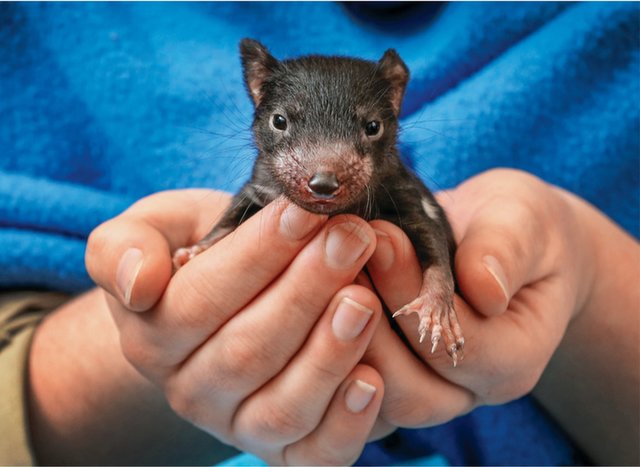
Captivebreedingprogramsensuredapopulationofdisease-free devils.
Thisdevilisreleasedfromatrapthathelpsscientistsmonitordevil health.
Inthelab,theystudiedthediseaseitself.Couldtheycreateavaccinetoprotectdevils?Thisresearchisongoing,butscientistsarehopeful.Atthesametime,theyareseeingsomecasesofpreviouslyinfecteddevilsthatareregainingtheirhealth.How?Thescientistssuspectthatthebodiesofsomedevilsarebeginningtoadapttofightoffthe disease.
Tasmaniandevilsareanimportantpartoftheirecosystem.Devilsplayahugeroleasscavengers,buttheyalsohuntintroducedanimals,suchasferalfoxes,cats,andferrets,whichhuntlocalwildlife.TasmaniandevilsareanationalicontoAustraliansandaremuchlovedaroundtheworld.Theirrecoveryis important!
